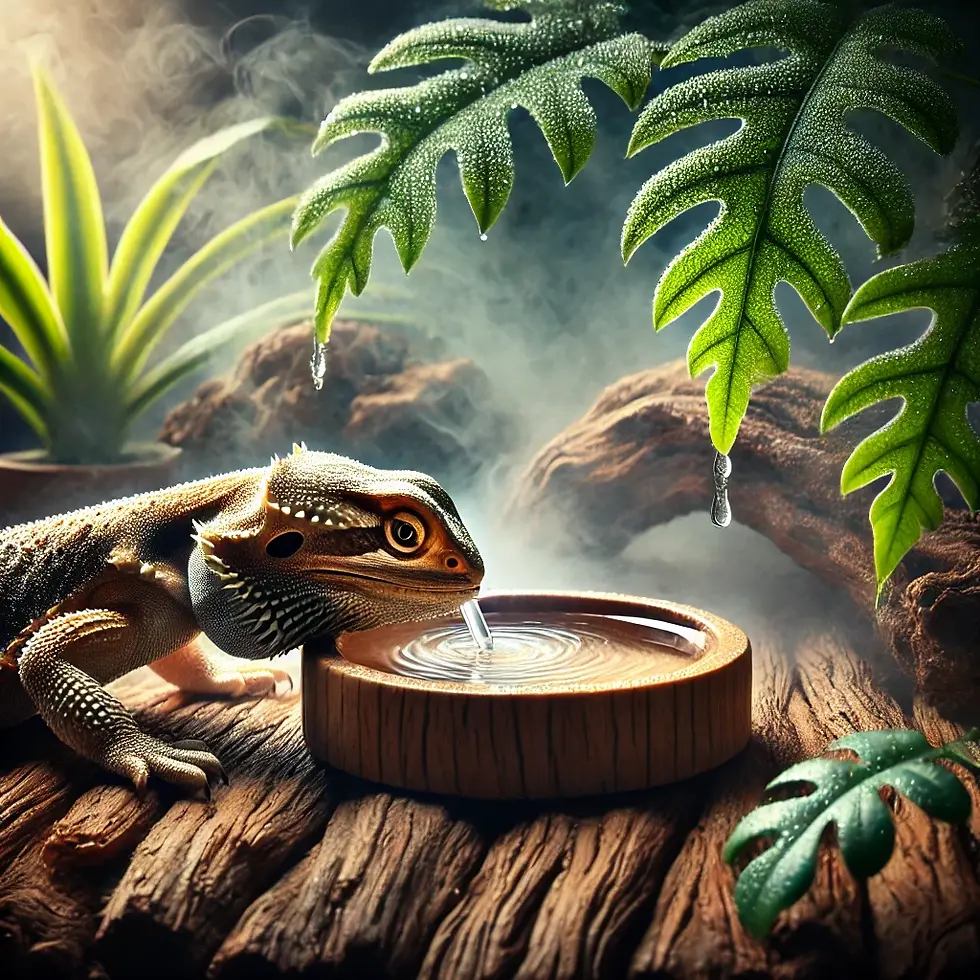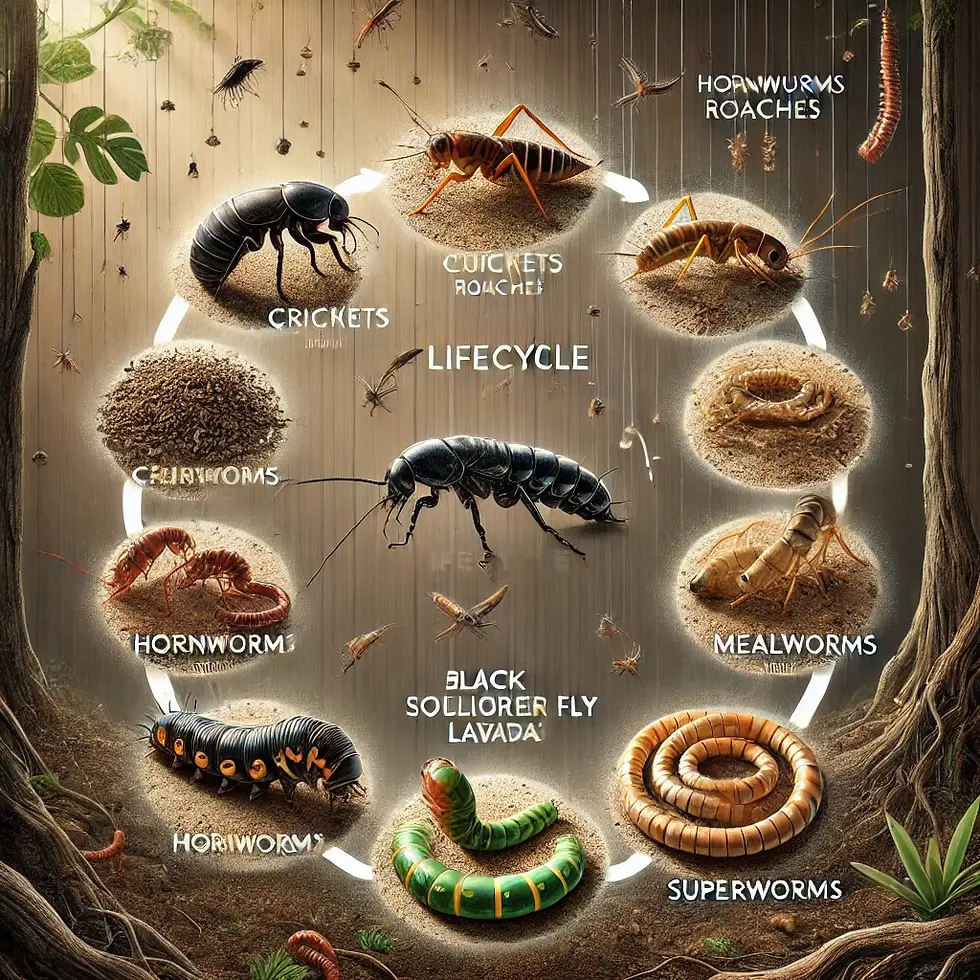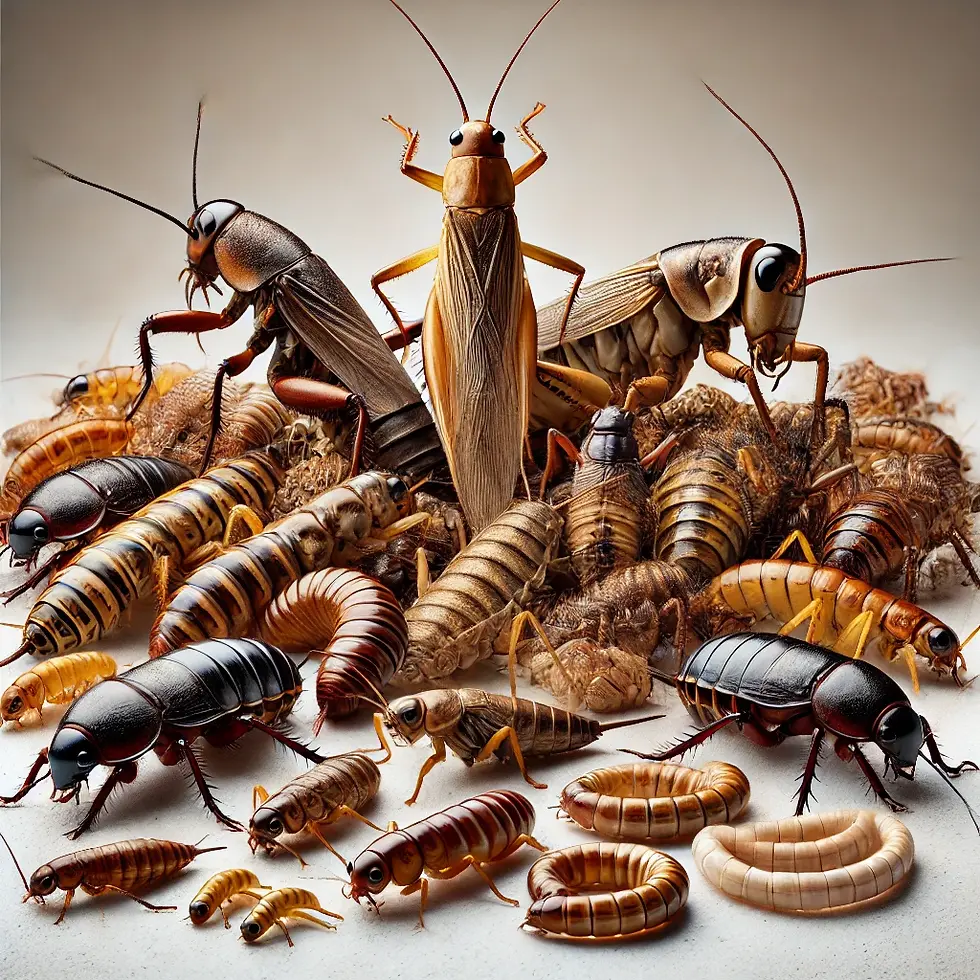Hydration Tips for Reptiles
- Rigor Moe

- Jan 16
- 2 min read
Updated: Feb 19
Proper hydration is essential for the health and well-being of reptiles. Whether your reptile is a desert dweller like a bearded dragon or a humidity-loving species like a chameleon, ensuring they stay hydrated can prevent a variety of health issues. This guide provides practical tips to help you maintain optimal hydration for your scaly friend.
Why Hydration Matters
Dehydration can lead to serious health issues in reptiles, including:
Impaction (digestive blockages).
Kidney problems.
Shedding difficulties.
General lethargy and poor appetite.
By tailoring hydration methods to your reptile’s natural habitat and needs, you can keep them healthy and thriving.
Signs of Dehydration
It’s important to recognize when your reptile may be dehydrated. Common symptoms include:
Wrinkled or sunken skin.
Reduced activity levels.
Sticky or tacky saliva.
Retained shed skin.
If you notice any of these signs, address the issue immediately and consult a veterinarian if symptoms persist.
Hydration Methods

1. Provide Fresh Water
Always ensure your reptile has access to clean, fresh water.
Water Dishes: Use shallow bowls to prevent drowning, especially for smaller reptiles.
Placement: Position water dishes away from heat sources to minimize evaporation.
2. Misting
Misting mimics natural rainfall and increases humidity levels.
For Tropical Species: Mist the enclosure multiple times a day.
For Desert Species: Mist sparingly, focusing on plants or decorations they can drink from.
Tools: Use a hand mister or automated misting system for convenience.
3. Soaking
Soaking helps with hydration and shedding.
Frequency: Offer soaks 1-2 times a week, or more frequently for species like bearded dragons during shedding.
Temperature: Use lukewarm water to avoid stressing your reptile.
Depth: Keep water shallow to prevent drowning.
4. Humidity Control
Maintain proper humidity levels based on your reptile’s species.
Tropical Species: Aim for 70-90% humidity.
Desert Species: Keep humidity lower, around 20-40%, but provide occasional hydration opportunities.
Tools: Use hygrometers to monitor humidity and adjust with misting or humidifiers.
5. Hydrating Foods
Incorporate high-moisture foods into your reptile’s diet.
Examples: Offer hornworms, silkworms, and fruits like watermelon or cucumber.
Caution: Avoid overfeeding sugary fruits, as they can disrupt dietary balance.
Species-Specific Hydration Tips
Bearded Dragons: Soak weekly and offer high-moisture insects like hornworms.
Chameleons: Use a drip system or mist regularly to simulate dew and rainfall.
Geckos: Mist enclosures and provide access to fresh water.
Snakes: Provide a water dish large enough for soaking and monitor humidity carefully.

A bearded dragon basks under a warming light, enjoying its cozy habitat.
Preventing Over-Hydration
While hydration is essential, over-hydrating or creating excessively humid conditions can lead to issues like respiratory infections or mold growth in the enclosure. Balance is key.
Final Thoughts
Hydration is a vital component of reptile care. By understanding your reptile’s specific needs and using appropriate hydration methods, you can ensure their health and longevity.
Have any hydration tips or tricks to share? Let us know in the comments below!
For more reptile care tips, check out:
"Top Feeder Insects for Bearded Dragons"
"The Lifecycle of Common Feeder Insects"






Comments